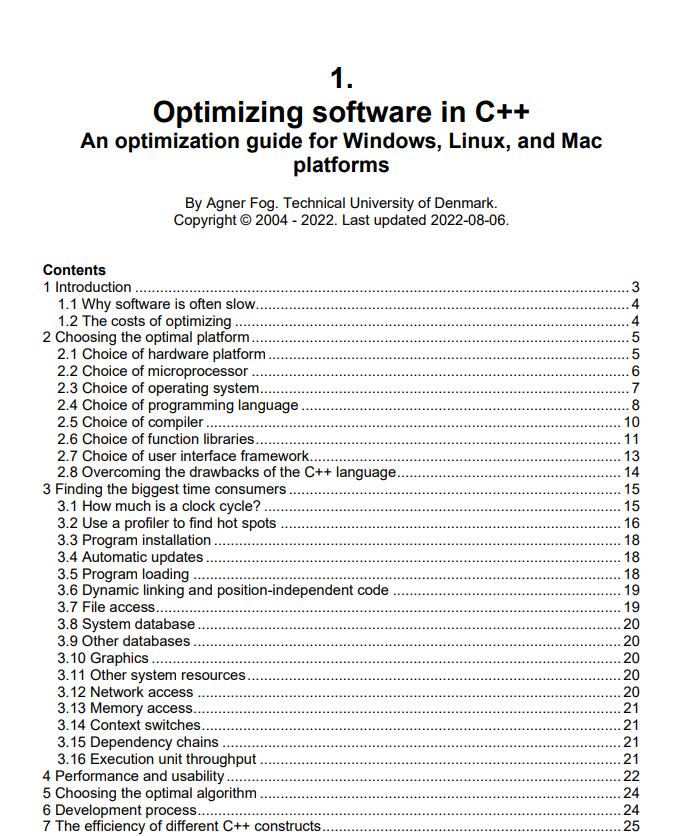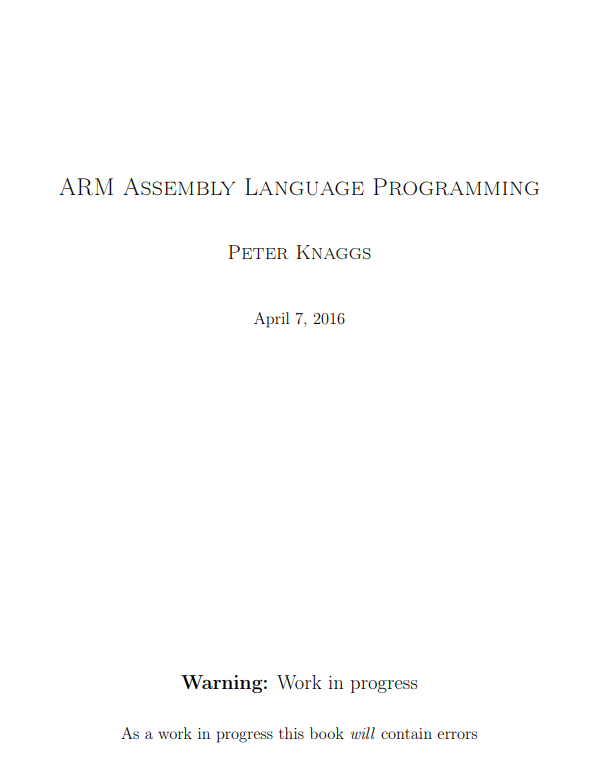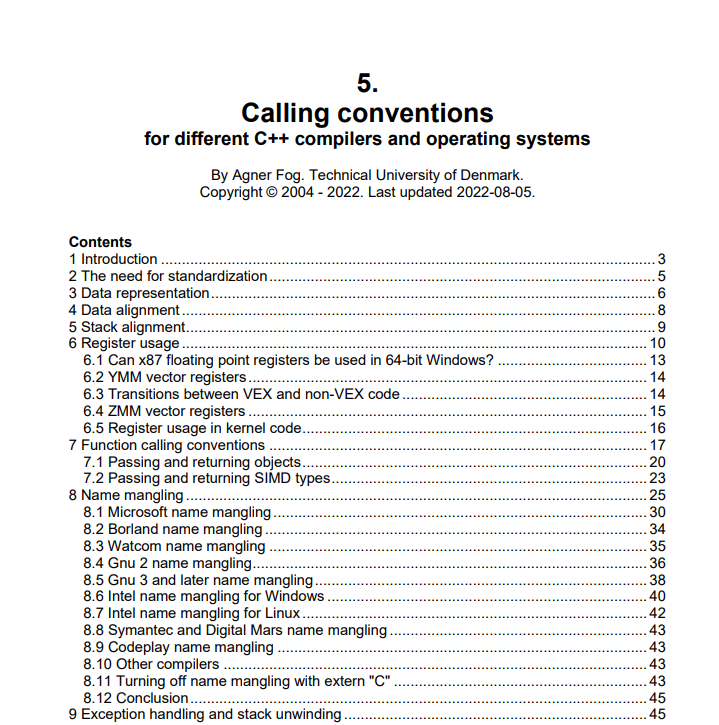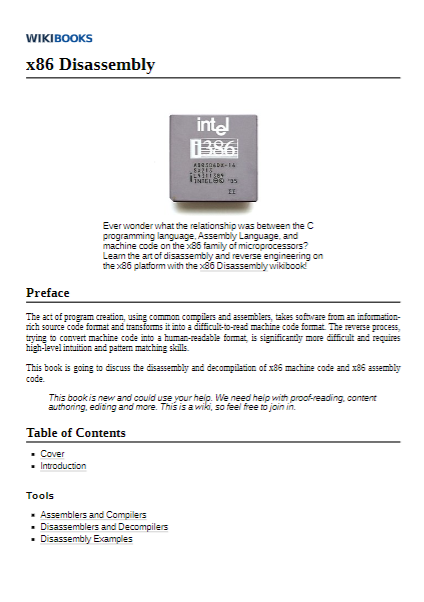Assembly Language
This book is an introduction to x64 assembly language. This is the language used by almost all modern desktop and laptop computers. x64 is a generic term for the newest generation of the x86 CPU used by AMD, Intel, VIA, and other CPU manufacturers. x64 assembly has a steep learning curve and very few concepts from high-level languages are applicable. It is the most powerful language available to x64 CPU programmers, but it is not often the most practical language.
An assembly language is the language of a CPU, but the numbers of the machine code are replaced by easy-to-remember mnemonics. Instead of programming using pure hexadecimal, such as 83 C4 04, programmers can use something easier to remember and read, such as ADD ESP, 4, which adds 4 to ESP. The human readable version is read by a program called an assembler, and then it is translated into machine code by a process called assembling (analogous to compiling in high-level languages). A modern assembly language is the result of both the physical CPU and the assembler. Modern assembly languages also have high-level features such as macros and user-defined data types.
Why Learn Assembly?
Many high-level languages (Java, C#, Python, etc.) share common characteristics. If a programmer is familiar with any one of them, then he or she will have no trouble picking up one of the others after a few weeks of study. Assembly language is very different; it shares almost nothing with high-level languages. Assembly languages for different CPU architectures often have little in common. For instance, the MIPS R4400 assembly language is very different from the x86 language. There are no compound statements. There are no if statements, and the goto instruction (JMP) is used all the time. There are no objects, and there is no type safety. Programmers have to build their own looping structures, and there is no difference between a float and an int. There is nothing to assist programmers in preventing logical errors, and there is no difference between execute instructions and data. There are many differences between assembly languages.
I could go on forever listing the useful features that x64 assembly language is missing when compared to high-level languages, but in a sense, this means that assembly language has fewer obstacles. Type safety, predefined calling conventions, and separating code from data are all restrictions. These restrictions do not exist in assembly; the only restrictions are those imposed by the hardware itself. If the machine is capable of doing something, it can be told to do so using its own assembly language.
A French person might know English as their second language and they could be instructed to do a task in English, but if the task is too complicated, some concepts may be lost in translation. The best way to explain how to perform a complex task to a French person is to explain it in French. Likewise, C++ and other high-level languages are not the CPU’s native language. The computer is very good at taking instructions in C++, but when you need to explain exactly how to do something very complicated, the CPU’s native language is the only option.
Another important reason to learn an assembly language is simply to understand the CPU. A CPU is not distinct from its assembly language. The language is etched into the silicon of the CPU itself.











